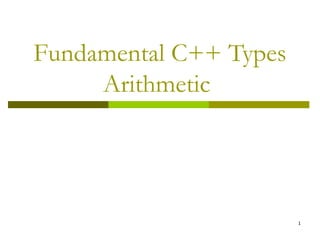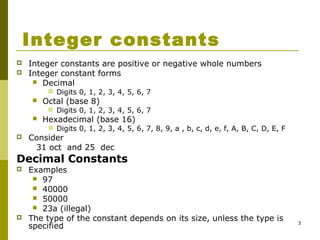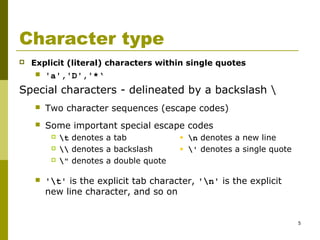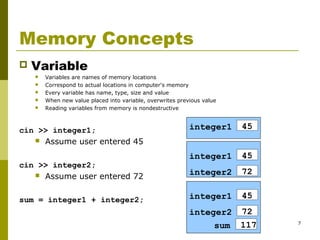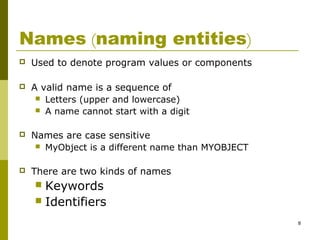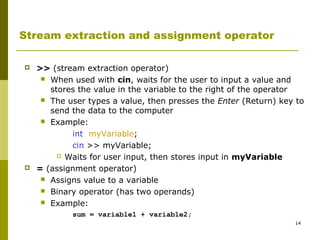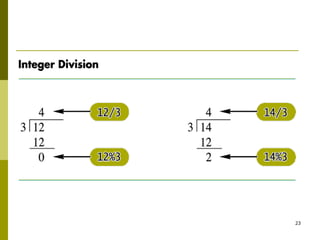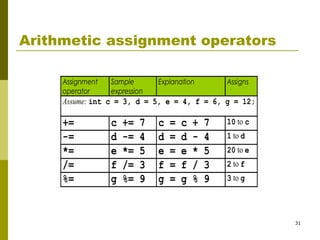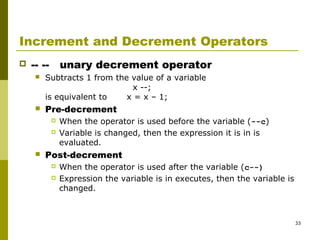The document discusses fundamental C++ types including integers, characters, and floating-point numbers. It describes integer types like int, short, and long and their typical sizes. Character types represent single characters with examples of escape codes. Floating-point types can represent real numbers in formats like float and double. The document also covers C++ concepts such as variable definitions and declarations, arithmetic operators, assignment, and increment/decrement operators.
